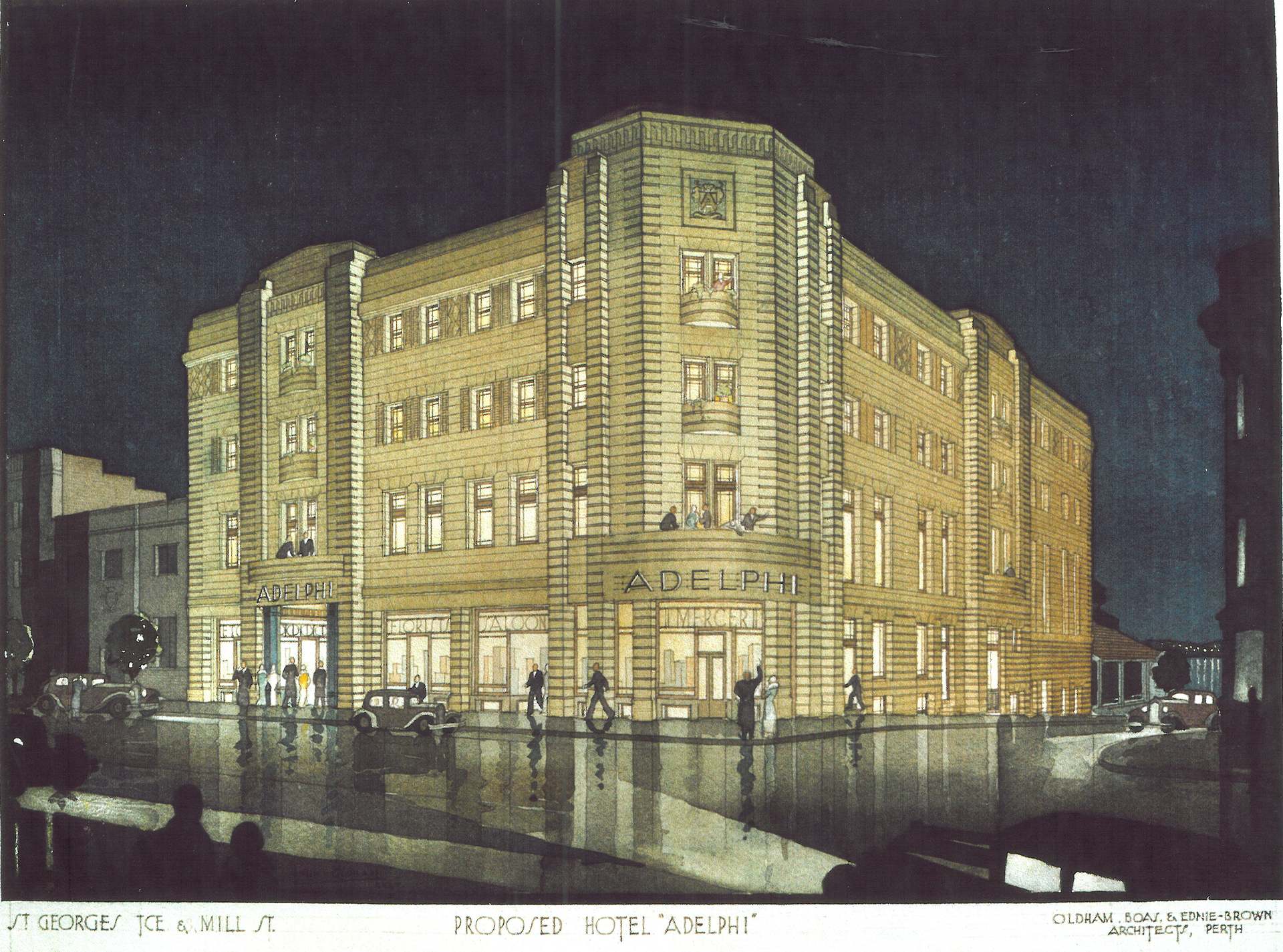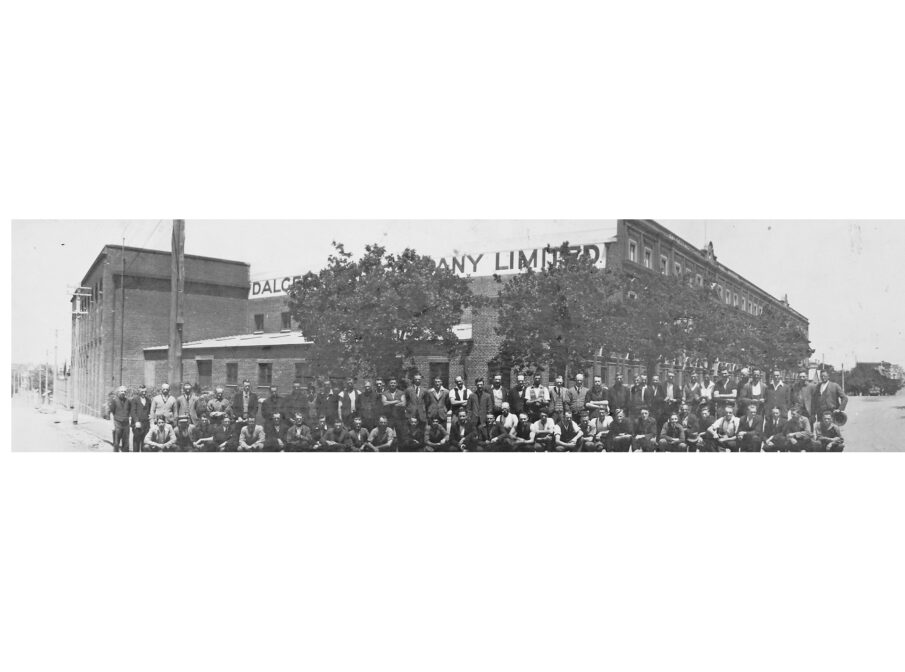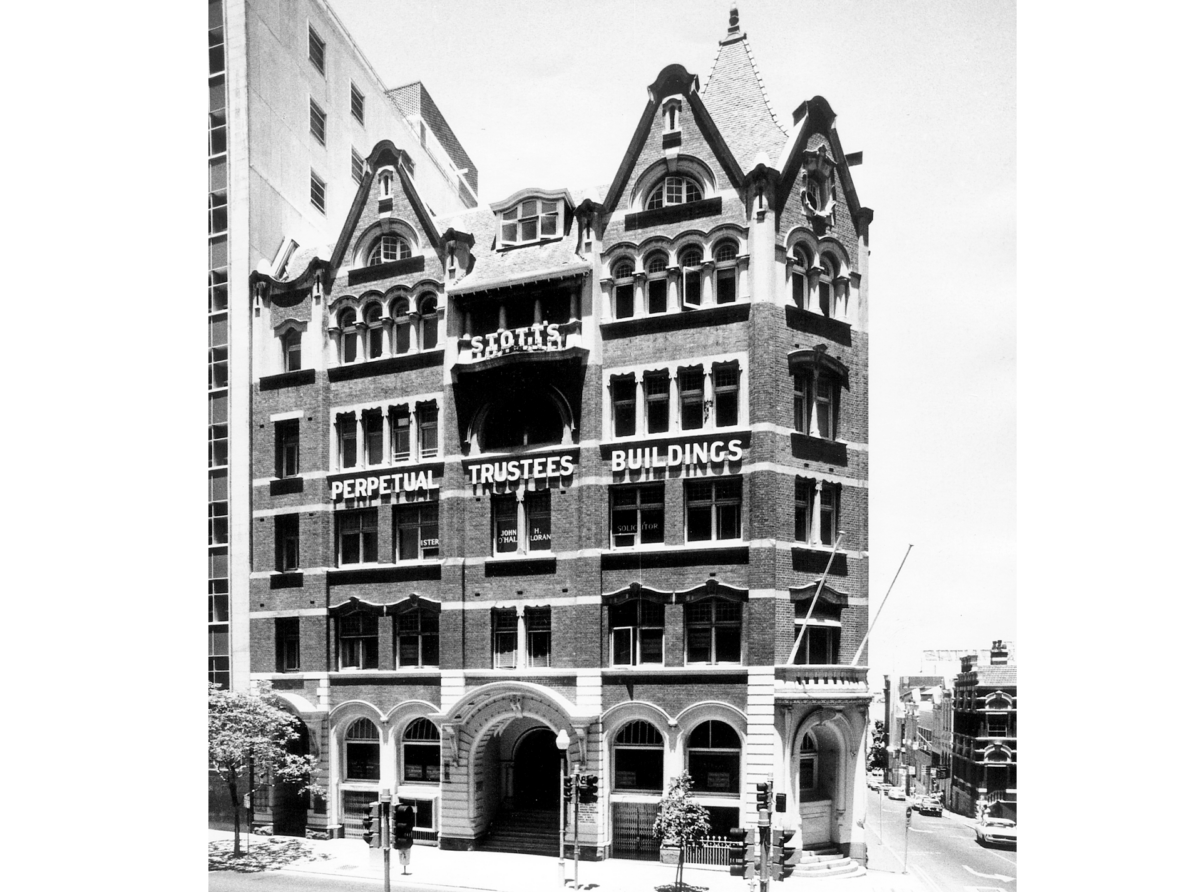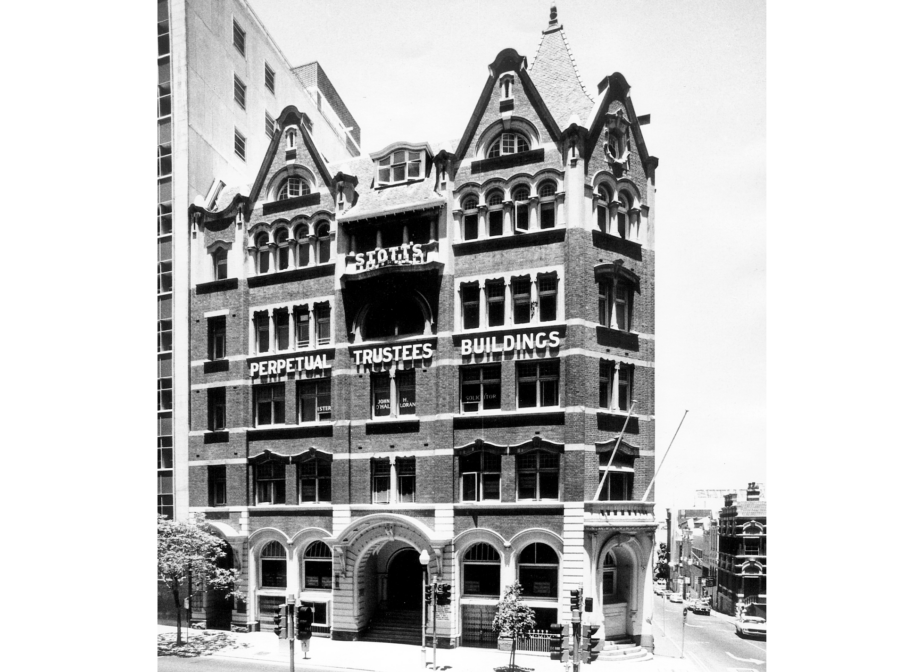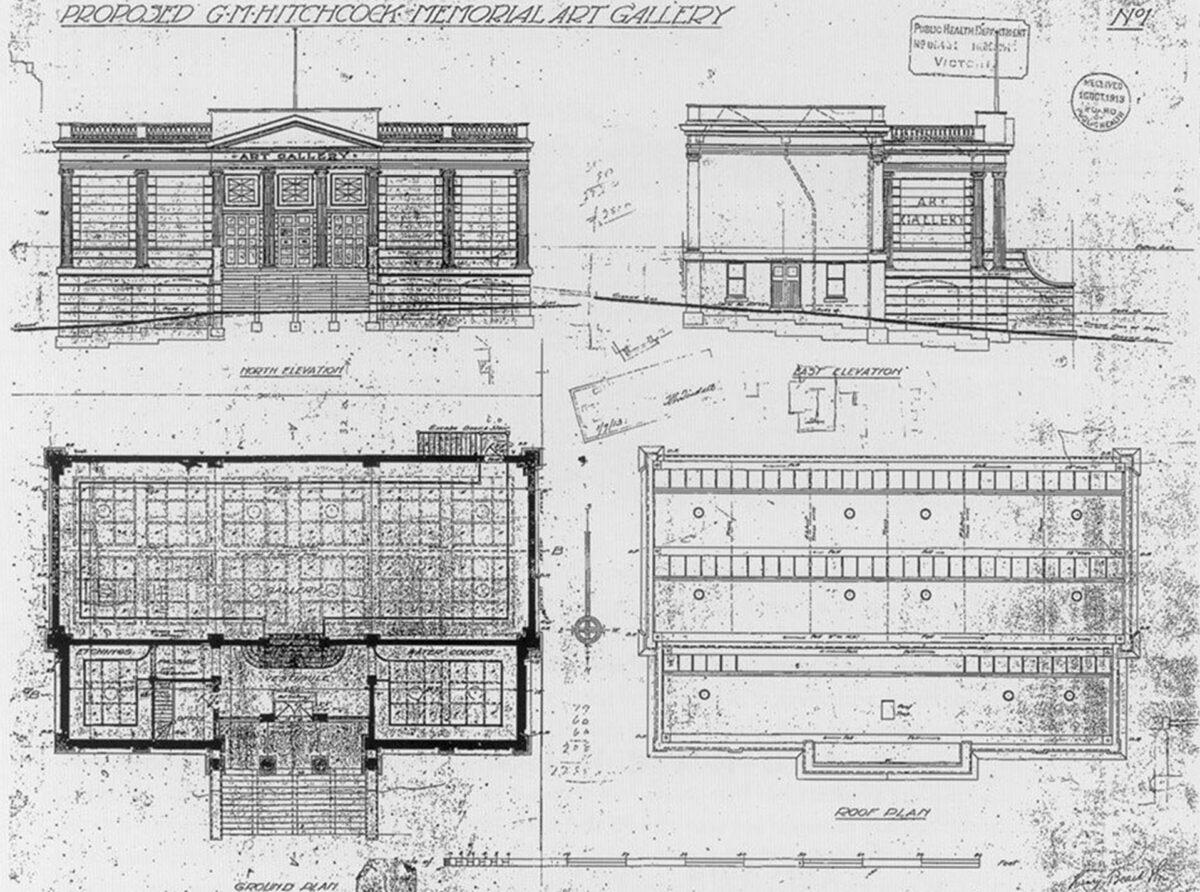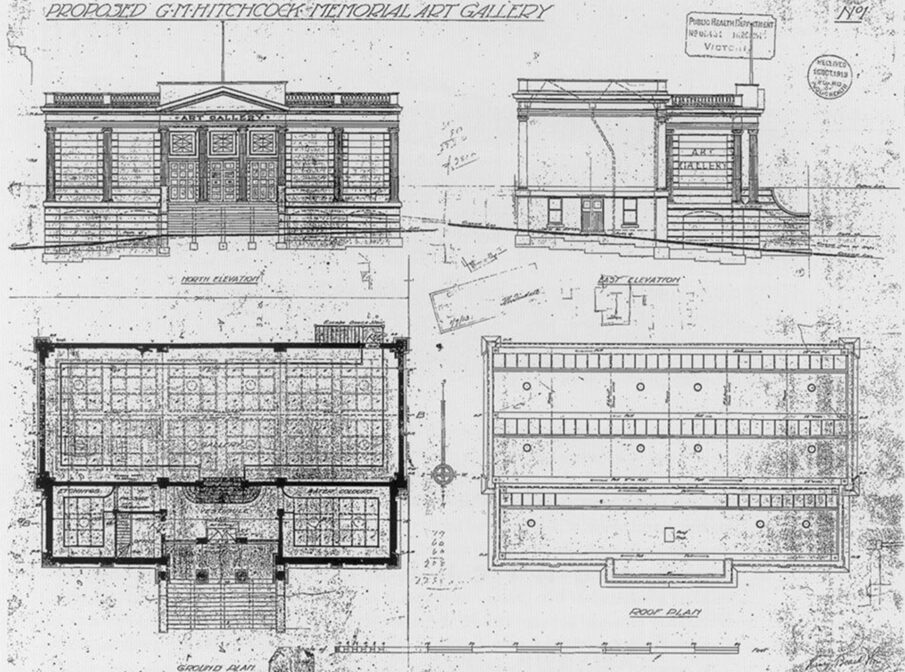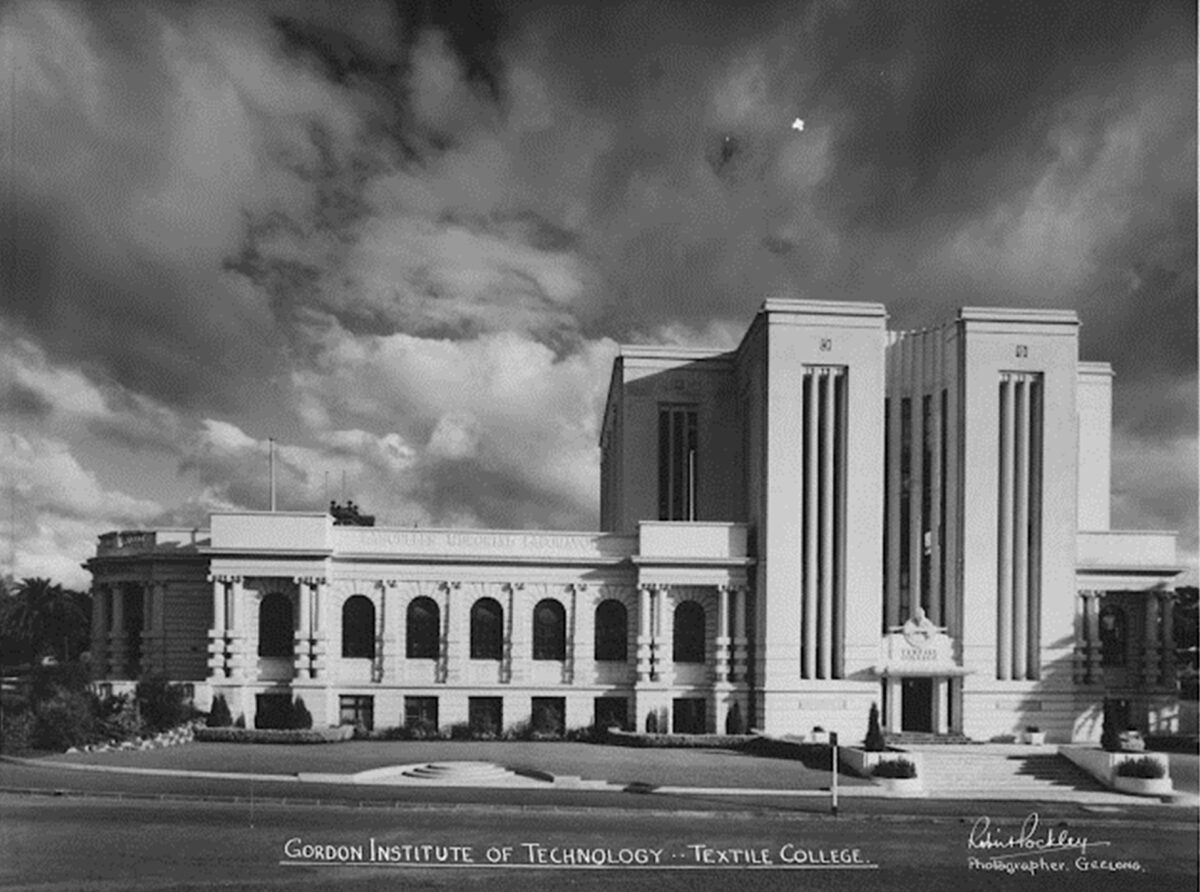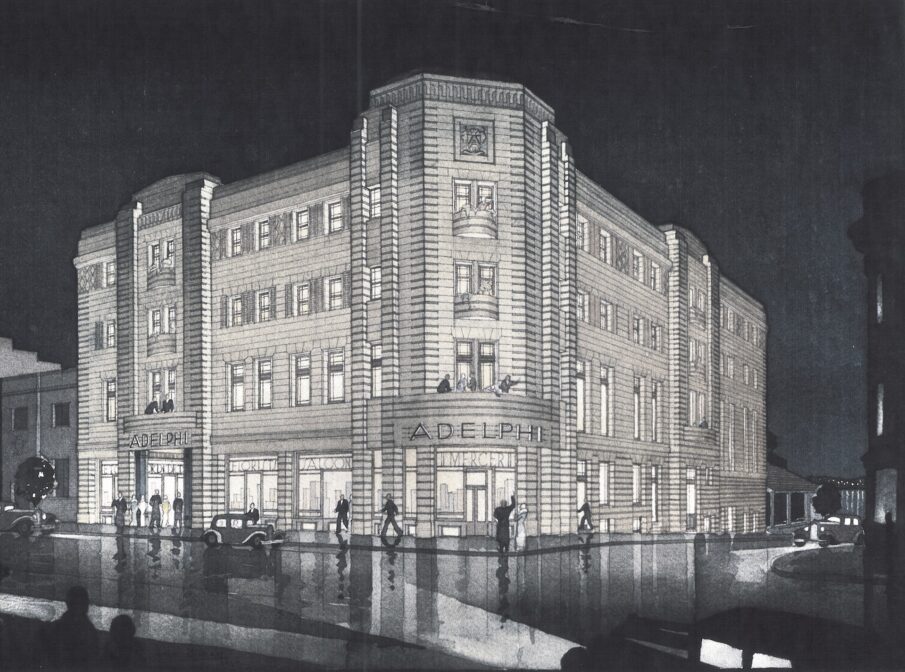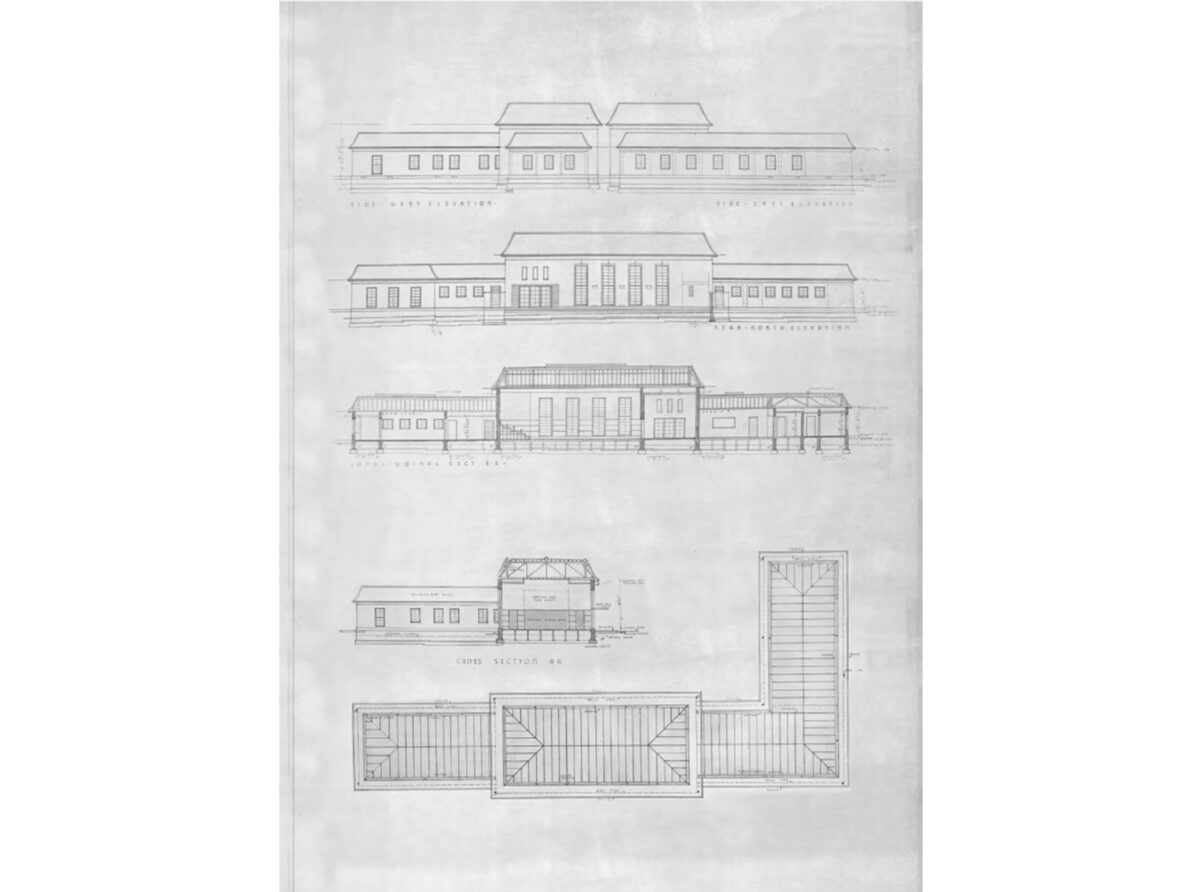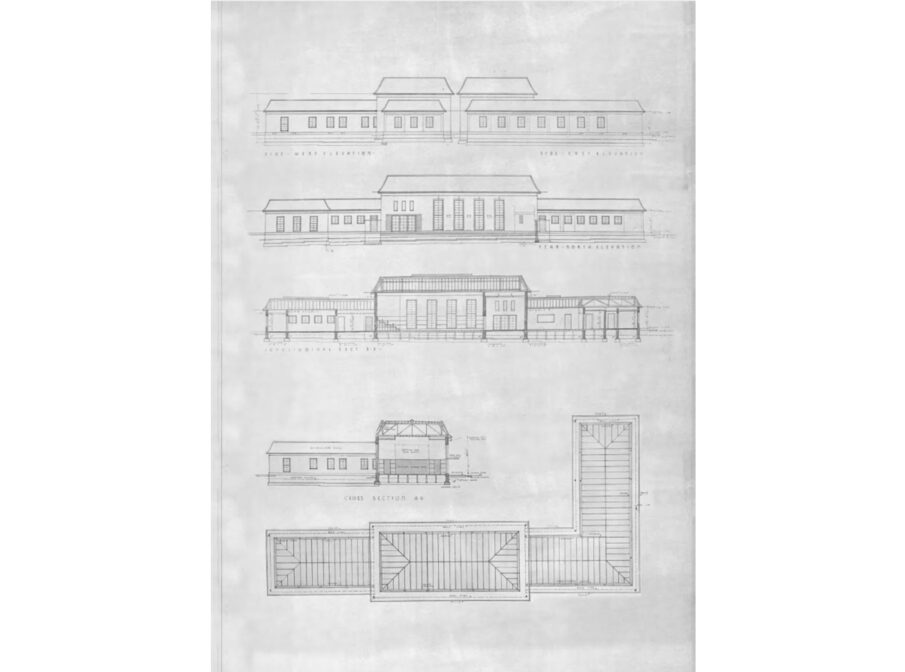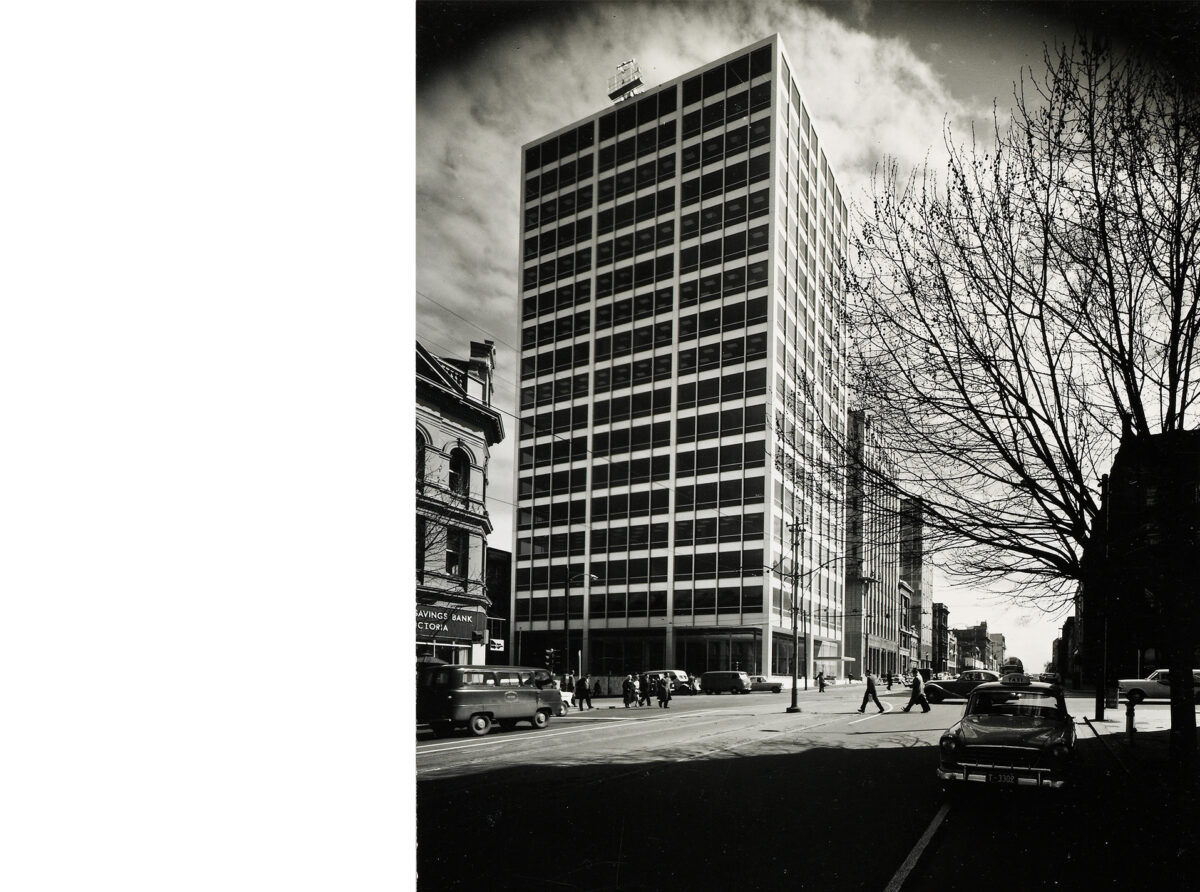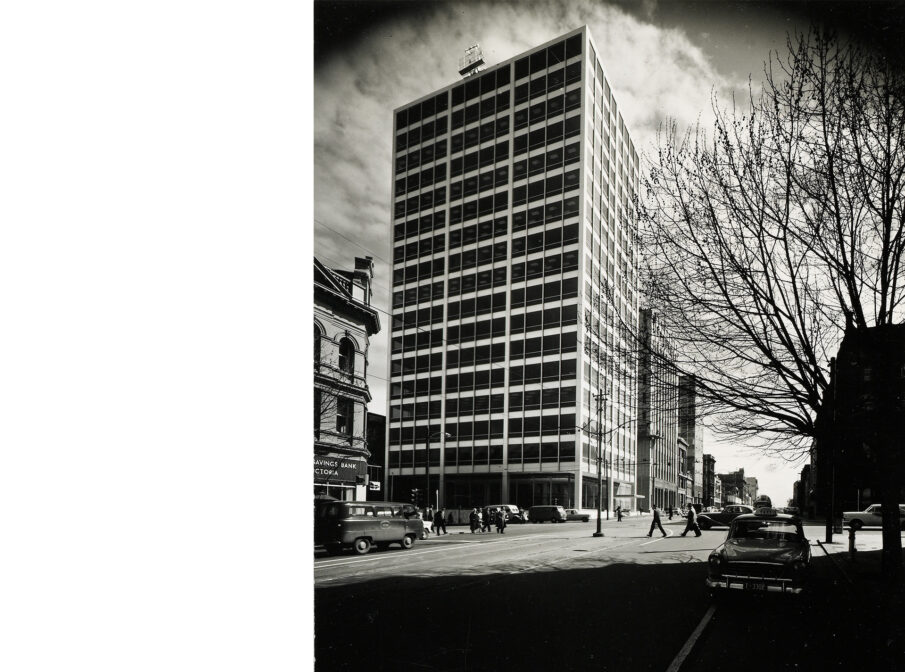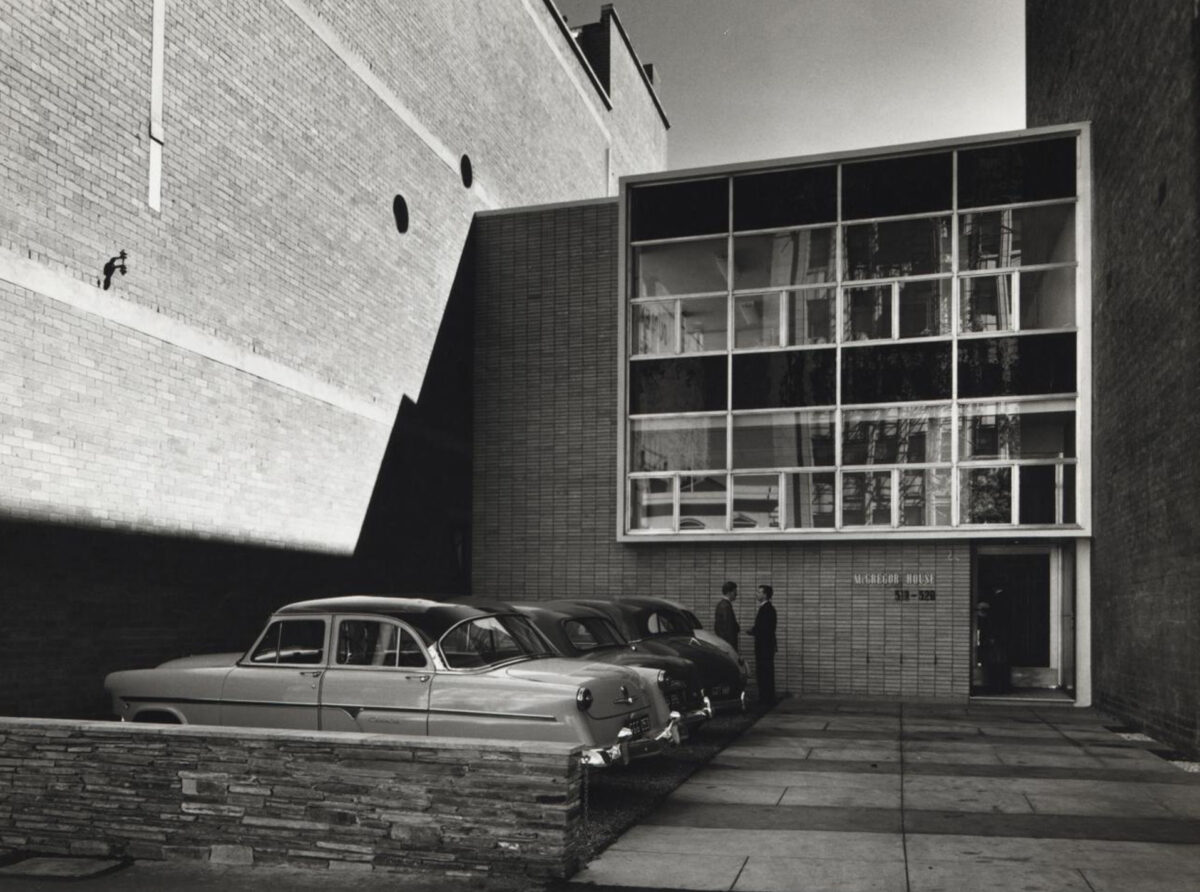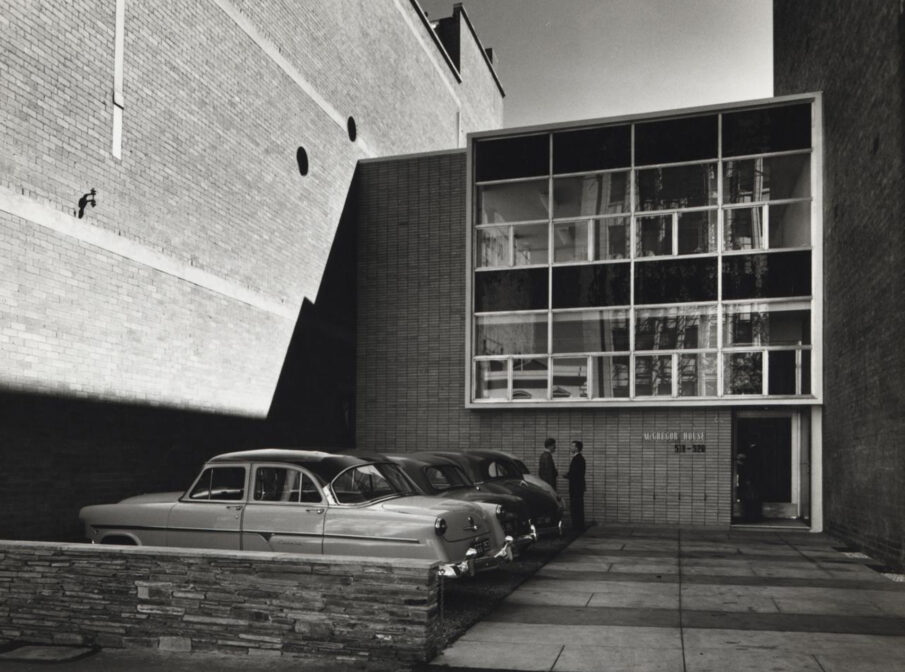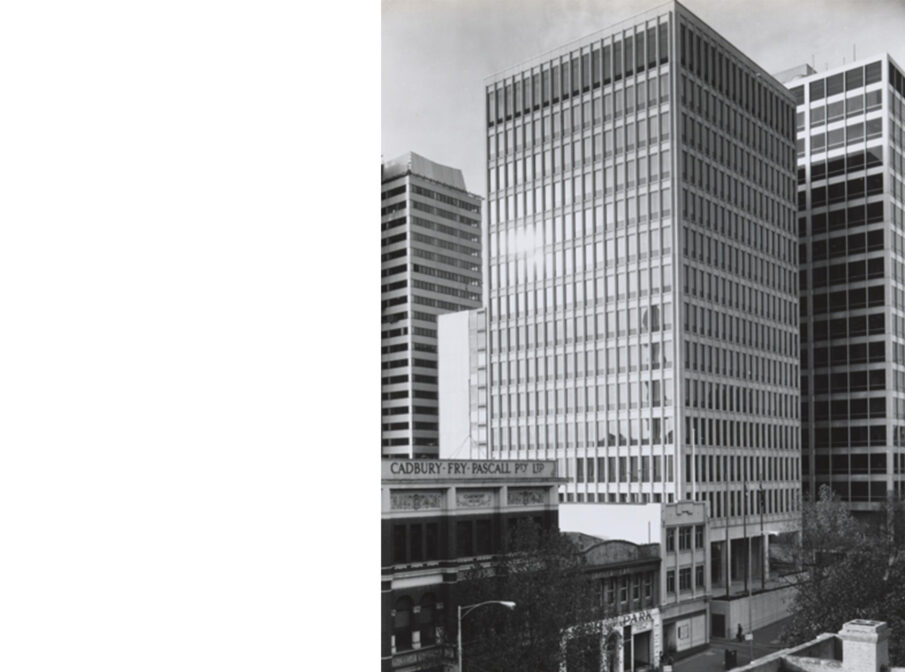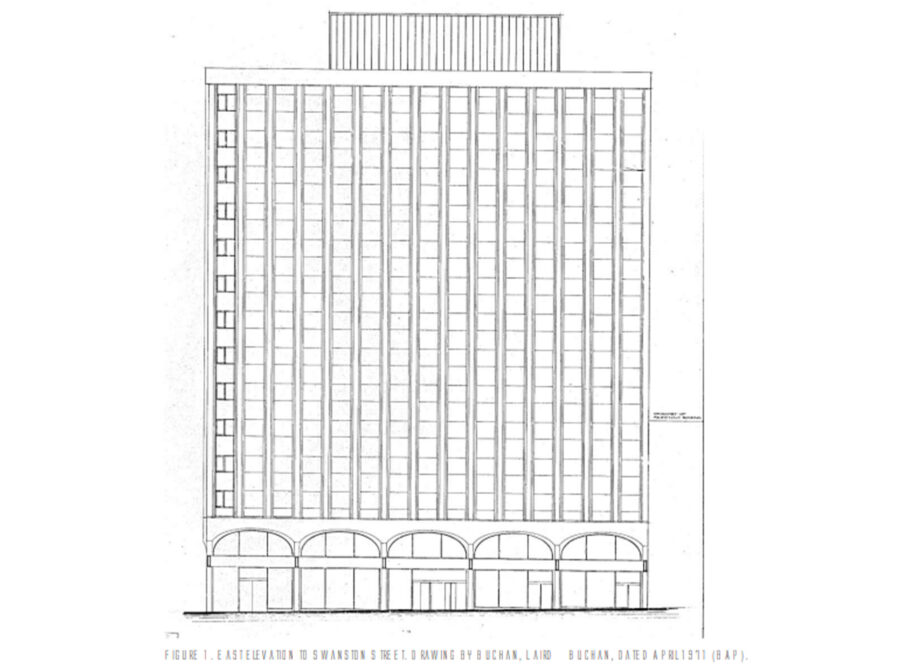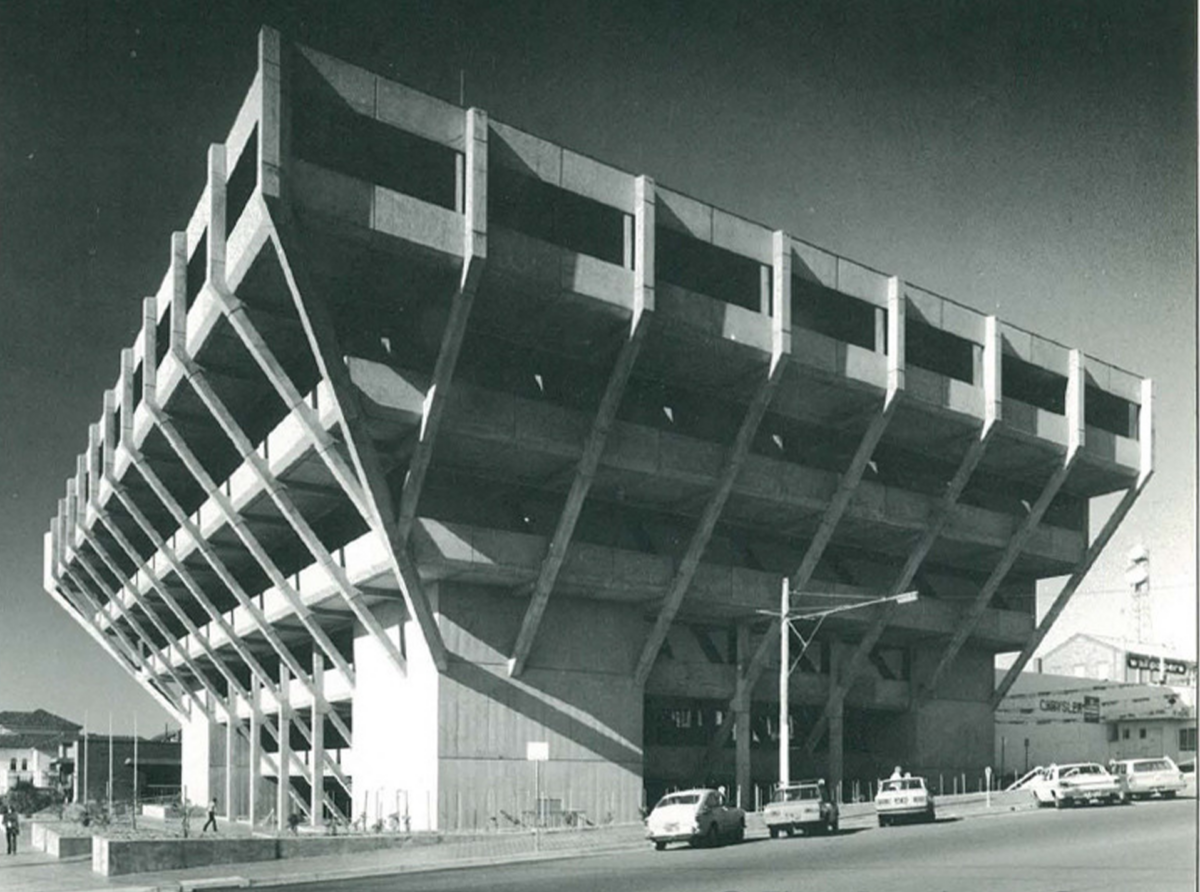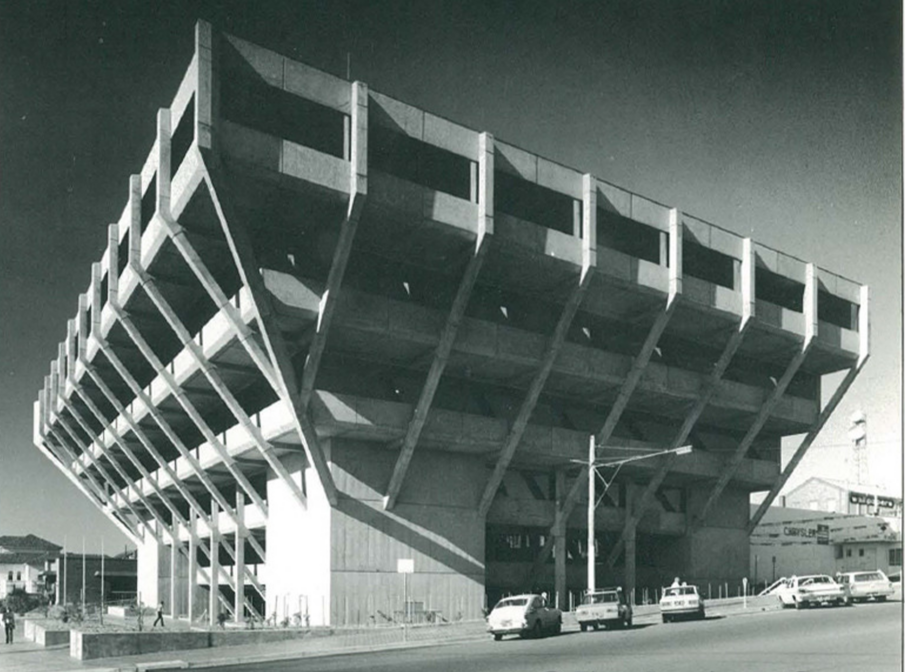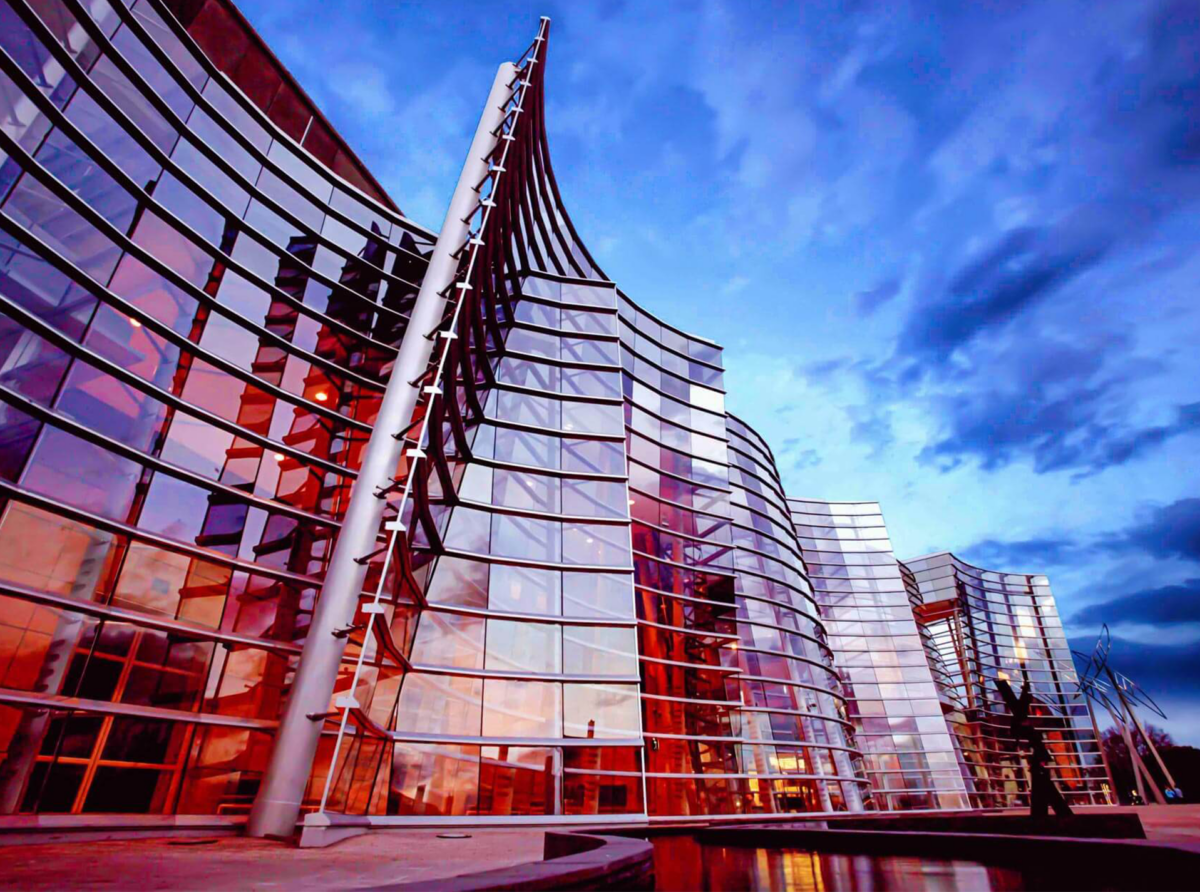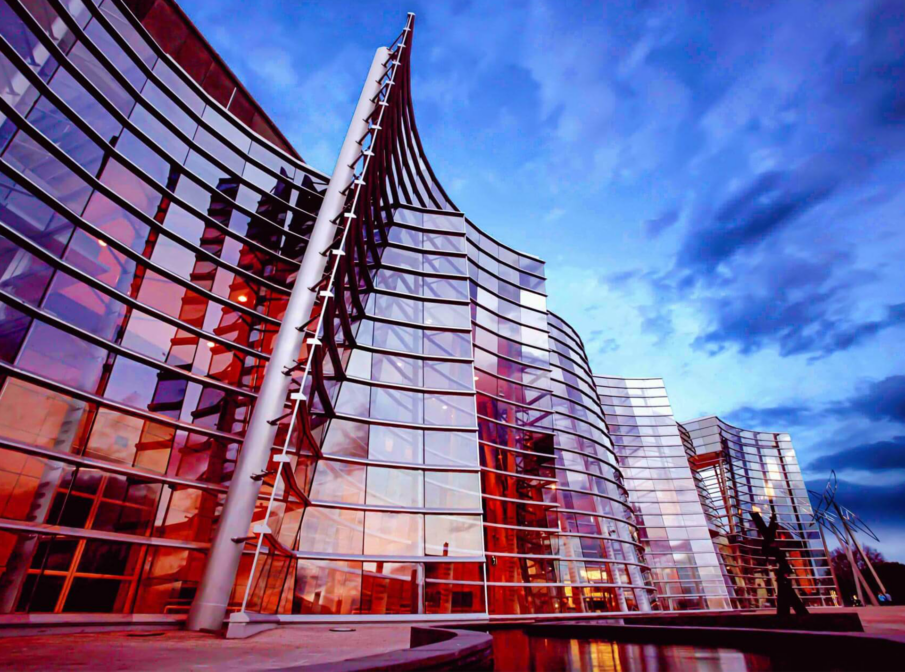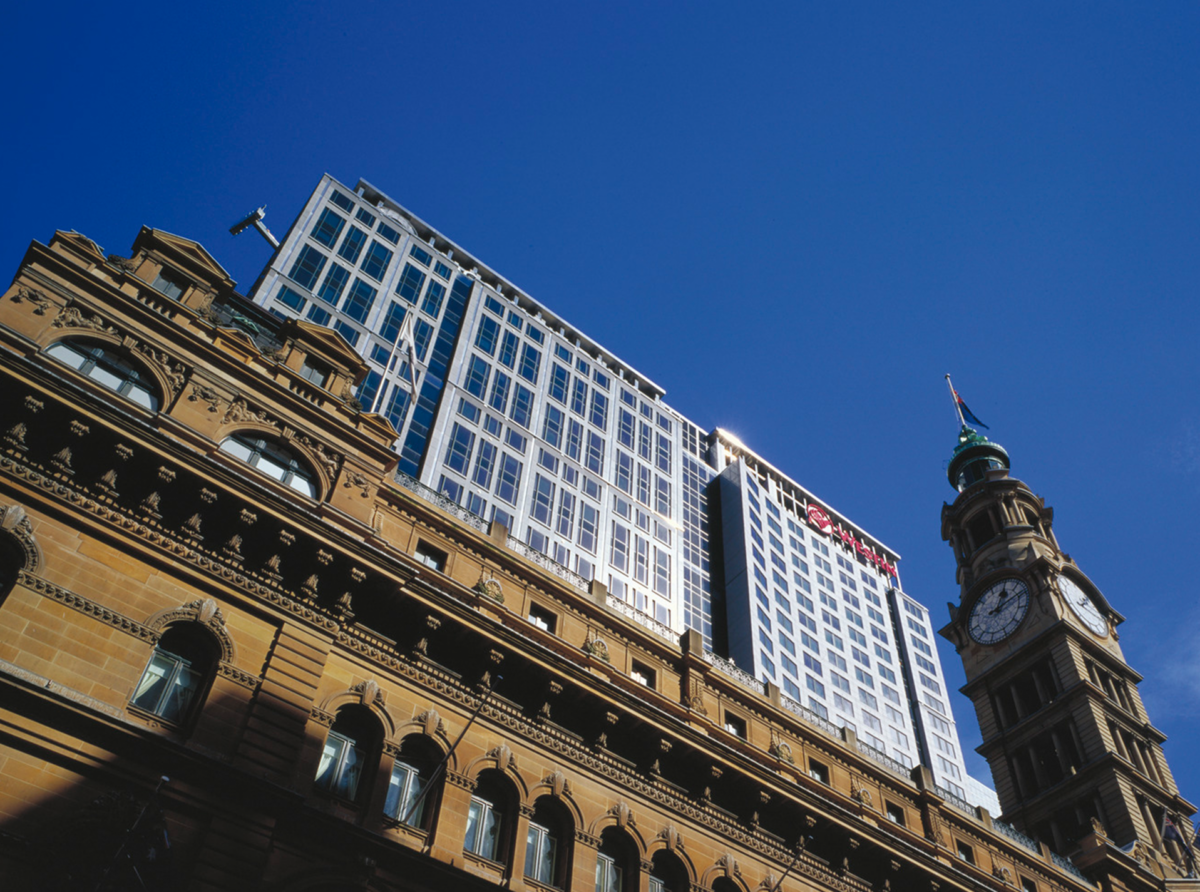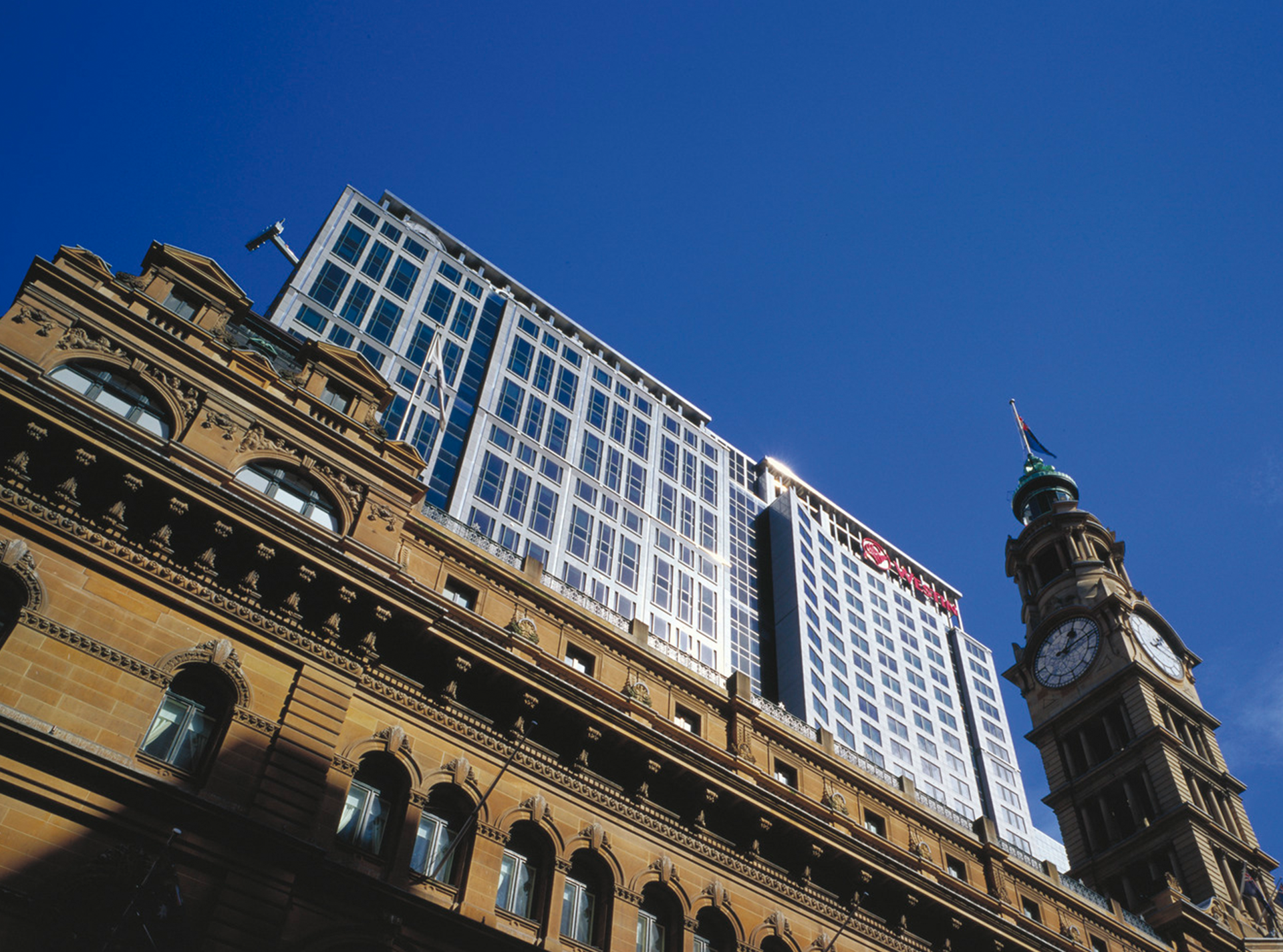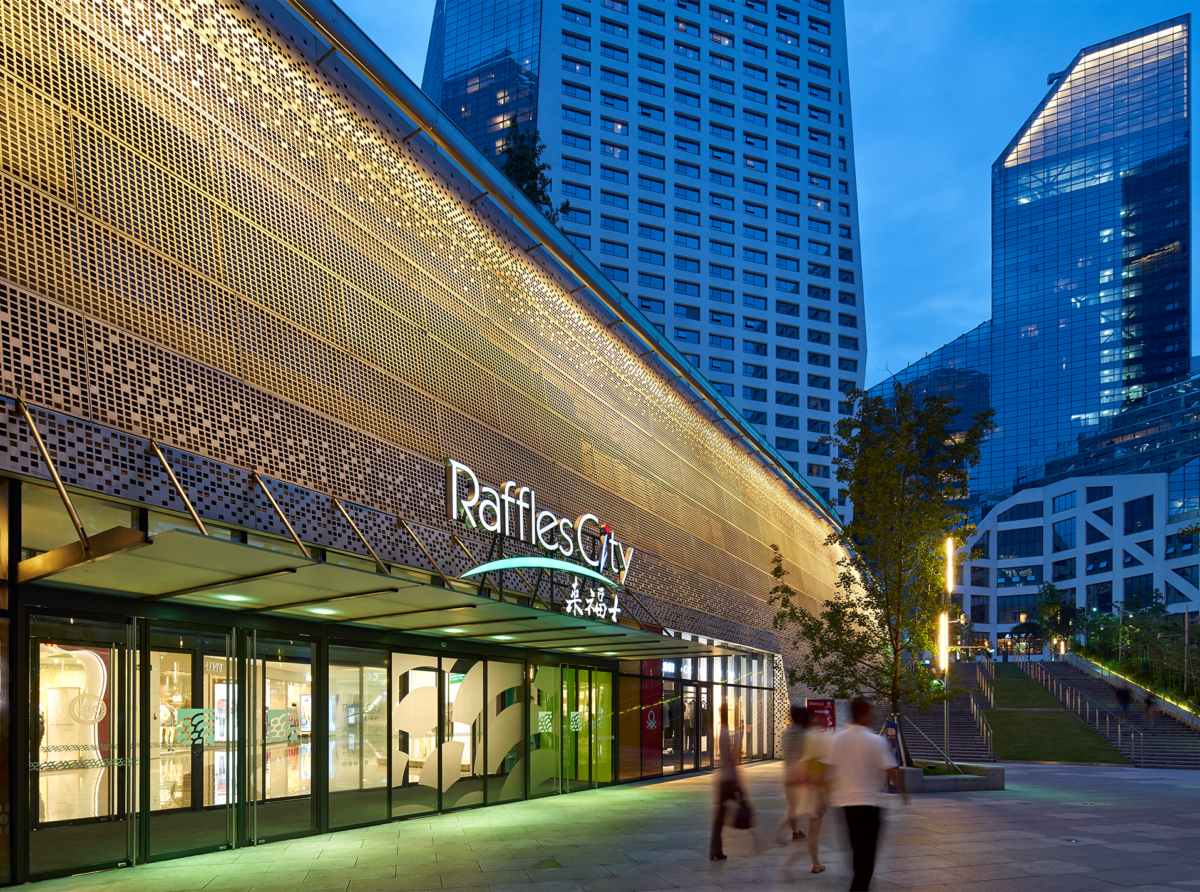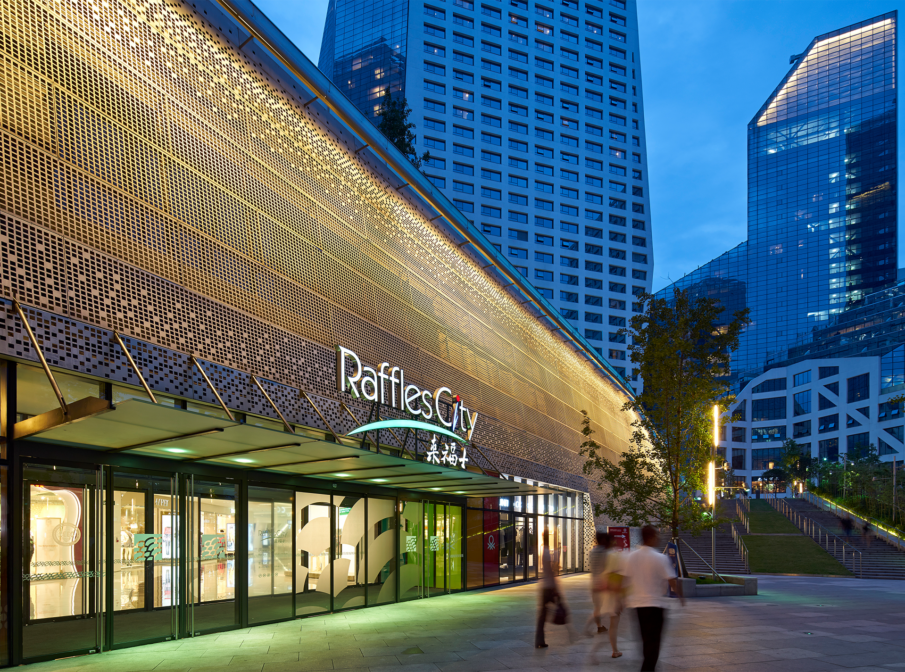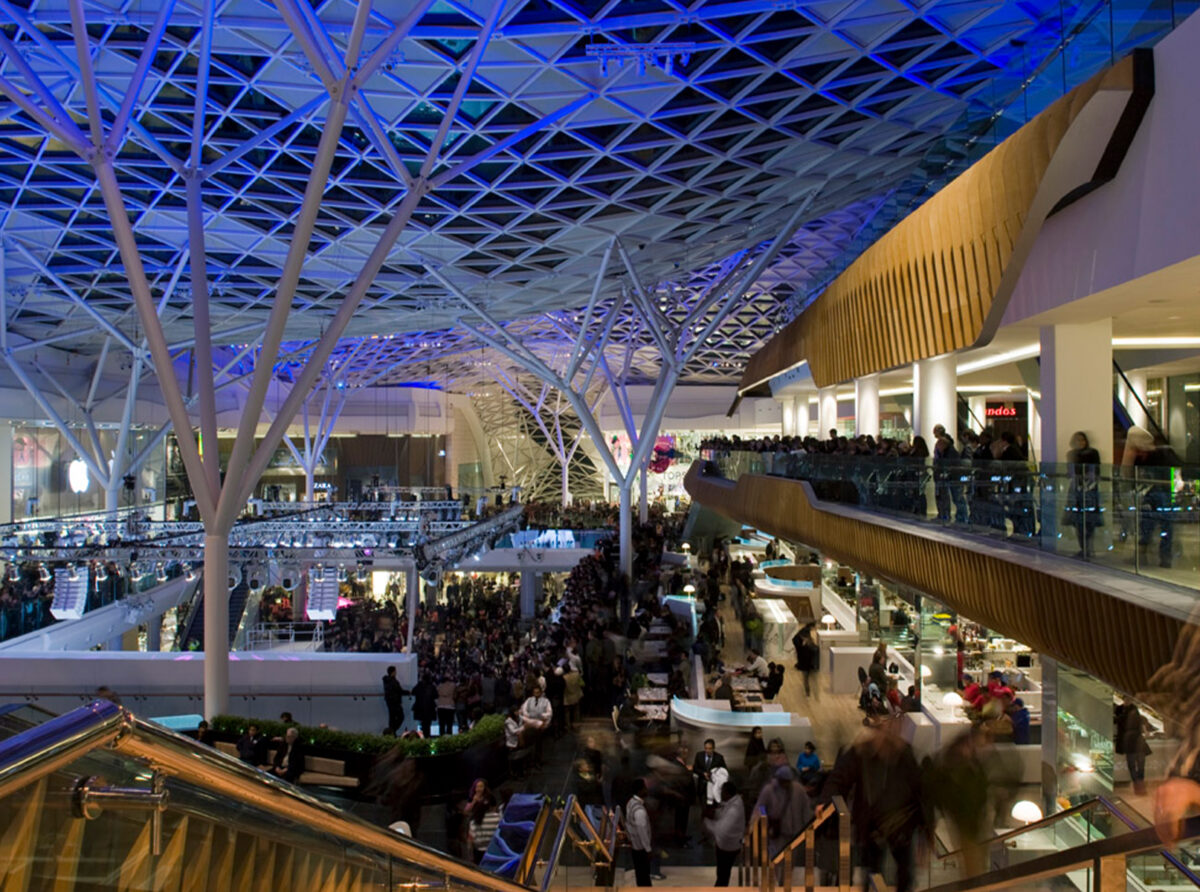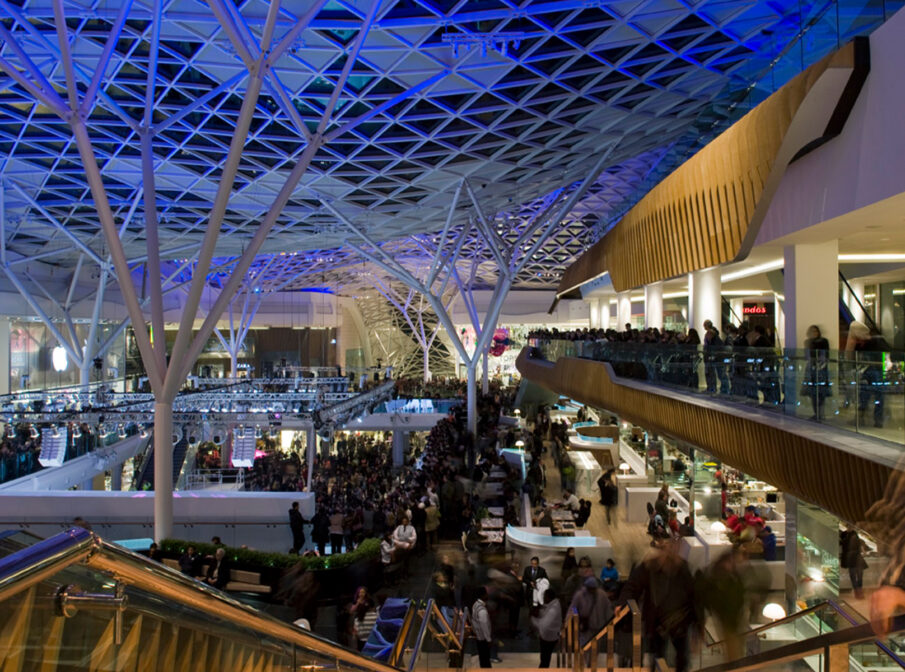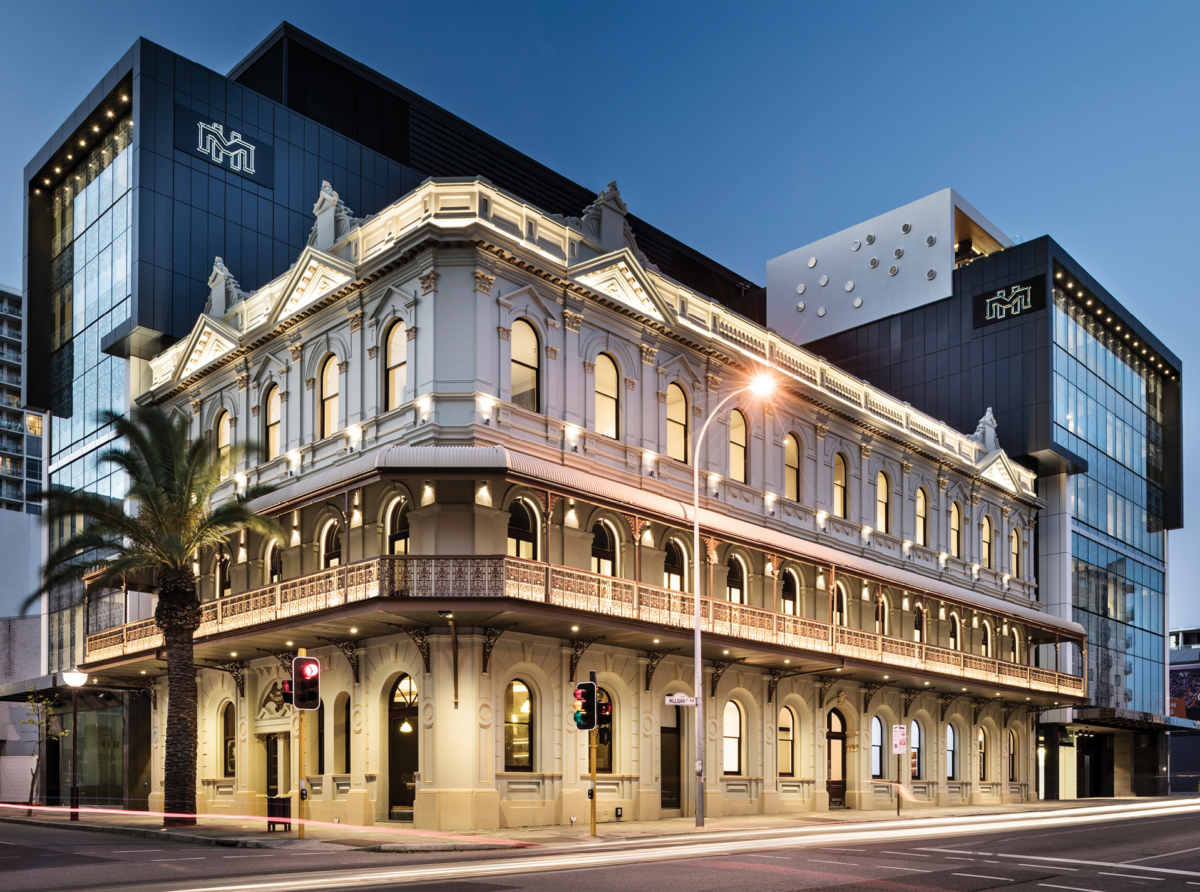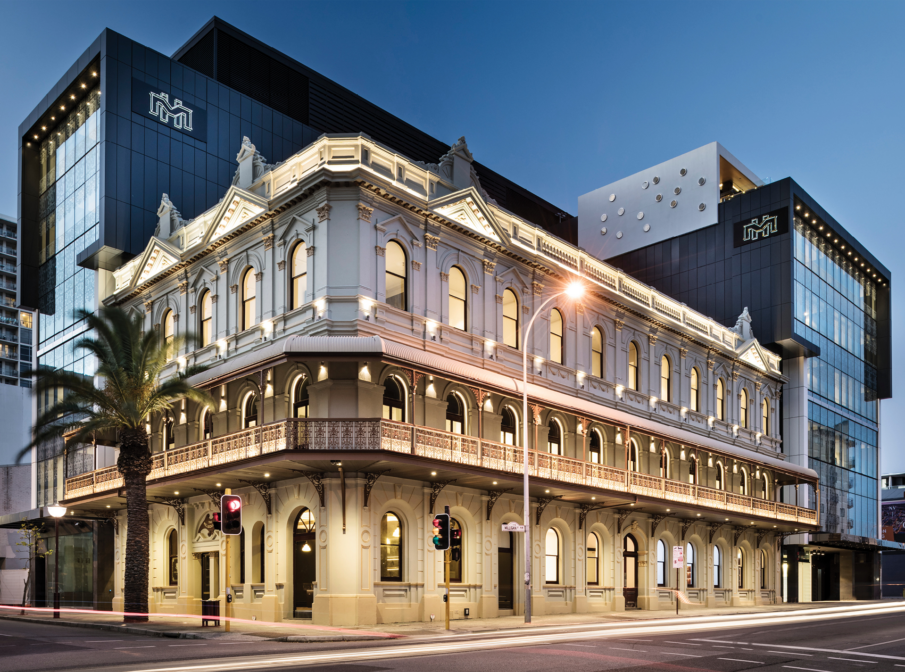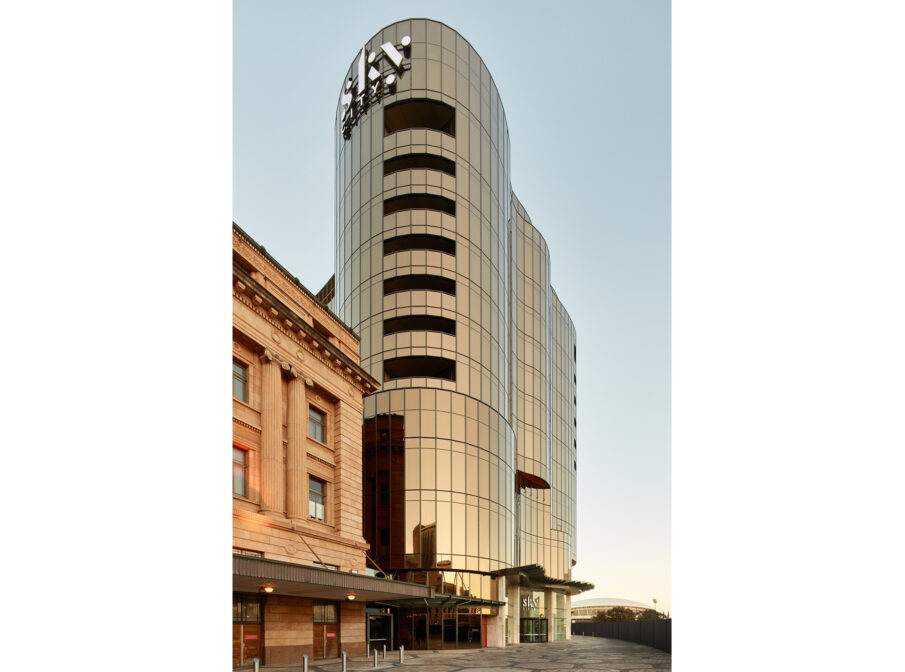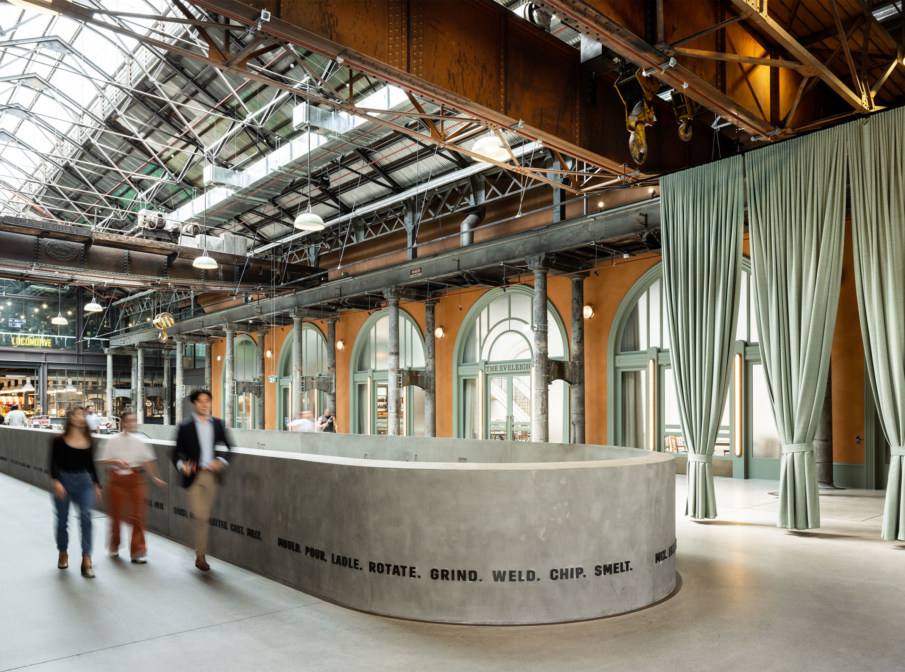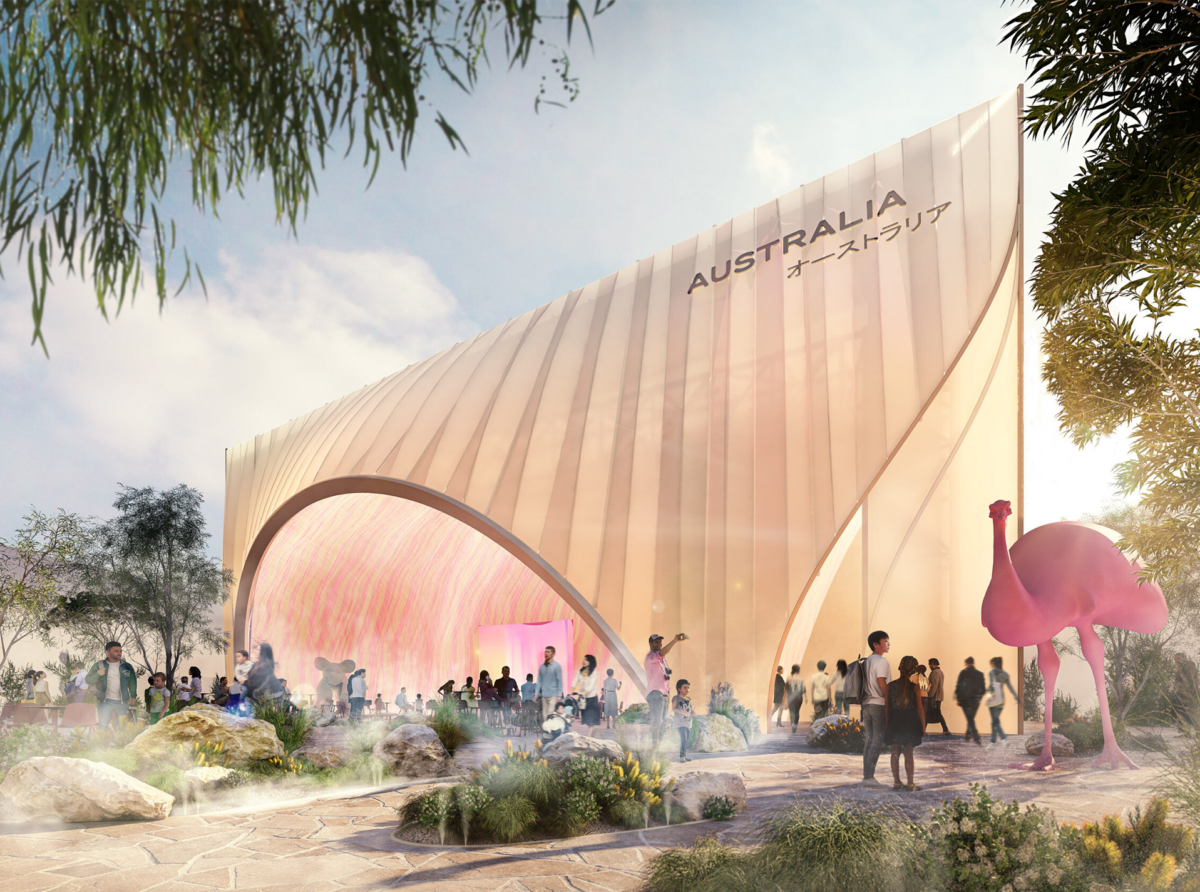For over 130 years, Buchan has been constantly reimagining urban life, transforming spaces and places into destinations that people love. Our global scale and diversity means we view the world, and our practice, differently. We transcend boundaries and design disciplines to bring together the best creative minds and we empower them to design a brighter, more sustainable future.
Founded in Geelong in 1890, Buchan is one of Australia’s oldest architecture and design firms. Buchan has made a significant contribution to the built environment in Australia, New Zealand and across the globe, with an extensive portfolio that spans boutique, intimate settings through to large-scale buildings and urbanscapes. Buchan’s longevity as a design practice and the tenure of our people has enabled us to build client and community relationships over decades, providing continuity to visionary city shaping and community building projects.
1891
Dalgety & Co. Wool Store
Buchan’s first significant project involved designing the brick wool warehouse for Dalgety & Co. in Geelong’s Gheringhap Street. The two-story warehouse featured solid brick walls enclosing a timber roof and structural system, with later modifications including brick show floor added in 1892. As of 1988, the only remaining sections of the 1981 structure were the ground floor strong room, and parts of the building around the vicinity of the strong room, preserving elements of the original timber structure.
National Wool Museum Collection
1906
Perpetual Trustees Building
Built in 1906 the Emanuel Buildings on Howard Street corner of St George’s Terrace in Perth were commissioned by pioneering pastoralists Sydney and Isadore Emanuel. Replacing their previous structure, the Queen Anne-style building featured meticulous brickwork, innovative design with a half-basement above ground level, and luxurious residential apartments, making it one of Perth’s first mixed-use buildings. Purchased by Perpetual Trustees in 1922, it became known as the Perpetual Trustees Building and later housed the Perth branch of the national business college, Stott’s.
Emanuel Buildings (1906 – 1979) – Museum of Perth
1913
G M Hitchcock Memorial Gallery
Designed by prominent Geelong architects Angus Laird and Thomas Johnston Buchan in 1913, the G M Hitchcock Memorial Art Gallery stands as a recognisable space within Geelong Gallery. Featuring a glazed roof and classical ornamentation, this gallery section remains an enduring tribute to a dedicated Geelong citizen’s efforts in establishing the Geelong Gallery. After the passing of Angus Laird in 1936, Buchan formed the firm Buchan, Laird and Buchan with Laird’s son Ewen, contributing to the design of several Geelong landmarks.
1913 Geelong Gallery
1928
TE Bostock Memorial, The Gordon Institute
The T.E. Bostock Memorial building, by Laird and Buchan in 1928, exhibits a classical revival design harmonizing with the Geelong Twon Hall and neighbouring structures. Its history importance is rooted in its connection to Victoria’s wool and textile industries and its role in establishing the college as the inaugural training institution for these sectors in the state.
T E Bostock Building, Lascelles Memorial Laboratory, Gordon Avenue, Geelong
1935
Adelphi Hotel
Built in 1935 on the Mill Street corner of St George’s Terrace, now 191 St George’s Terrace, the luxurious building was initially considered for a new town hall but purchased by gold miner and hotelier Gordon Dunleavy from Foy and Gibson. The construction, featuring 800,000 bricks and 554,400 feet of timber flooring, included grand amenities such as a beauty parlour, men’s hair salon, Perth’s first hotel pool, a Turkish bath, gymnasium, and a tea pagoda in the roof garden offering panoramic views of the city skyline.
Hotel Adelphi (1935 – 1967) – Museum of Perth
1938
Geelong Grammar Music School
The School of Music, designed by Buchan, Laird and Buchan, aimed to provide a self-contained building for various musical activities with an emphasis on functionality and collaboration. The L-shaped plan, central concert hall, and strategic placement of administrative offices and teaching studios reflect meticulous design, while the use of russet-toned bricks, venetian blinds, and carefully chosen colour schemes enhance both the exterior and interior aesthetics. One of the largest buildings of its kind, the acoustical treatment features independent room construction, concrete floors covered with heavy cork carpet, and careful consideration of soundproofing measures in each space.
1960
Shell Head Office
Shell Corner, a significant high-rise office building in Melbourne, was designed by Buchan Laird and Buchan in collaboration with Skidmore, Owings and Merrill (SOM).
Constructed in 1958, the 17-level tower was among the tallest buildings in Melbourne at the time. It utilised innovative American high rise construction technology, a self-supporting aluminum curtain framed wall with anodised spandrels and column covers and heat absorbing polished solar grey plate glass.
Adjacent to the earlier Old Shell Corner designed by A & K Henderson in 1932, it served as the Australian headquarters for the global petroleum corporation. The post-war era saw Melbourne architect John Buchan’s firm expanding, with notable works including the Shell House (1960).
Wolfgang Sievers, c. 1950s, Shell House – Melbourne, National Library of Australia, NGV 2001.358
1955
McGregor House
Constructed in 1955 on Collins Street between King and William Streets, McGregor House, designed by Buchan Laird Buchan architects, featured a Modernist cubic design popular for the era.
The glass curtain wall extended beyond a cream brick wall both at its base and on one side. The recessed entrance, positioned discreetly on the right, contributed to minimising the impact of the composition, as the building was situated between two taller structures and set back deeply on its site. Unfortunately, by the 1980s, McGregor House was demolished.
Wolfgang Sievers, c. 1950s, McGregor House – Melbourne, National Library of Australia, NGV 2001.358
1968
A.C.I House – Melbourne
Designed by Buchan Laird & Buchan in 1964, the ACI Building is one of the earliest examples of completely concrete modular and structural facade in Melbourne, representing an inspired office design. As the Head Office for Australia Consolidated Industries, it was the first free standing tower of this type in Melbourne CBD. The building earned the Victorian Architecture Award in 1968, but unfortunately was later demolished.
Kerr Bros & Commercial Photographic Co., c. 1950s, A.C.I House – Melbourne, National Library of Australia, NGV 2001.358
1972
Nubrik House
Nubrik House, designed by Buchan, Laird & Buchan and constructed by A V Jennings Industries Australia Ltd, stands as a historically significant Post-War Modernist commercial building in Melbourne, showcasing distinctive brickwork in its design. Serving as the national headquarters for Brick & Pipe Industries Ltd, it reflects the postwar development and corporate architecture trends of the 1950s-70s, with its aesthetic significance stemming from the unconventional use of brick piers and a reinforced concrete frame. The building, marked by its original external form, brickwork, and configuration, is a notable representation of Melbourne’s architectural history.
1974
The Former State Saving Bank of Victoria
Designed by Buchan, Laird & Buchan and constructed around 1974, the Former State Savings Bank of Victoria is a well-preserved example of a Post-War Modernist commercial building that played a role in the postwar building boom transforming central Melbourne. With its 13-storey structure showcasing typical features of the era, such as a heavy arcaded podium base and grid-like walls with vertical accents, the building is a representative and significant piece of Melbourne’s architectural history, reflecting the style prevalent in the 1960s to the mid 1970s.
Property 109264 45TO63 Swanston ST
1978
State Government Offices Geelong
Designed by Buchan Laird & Buchan in conjunction with the Government’s State Works Department, the State Government Offices Geelong is one of the few remaining examples of Brutalist architecture in Geelong.
Completed in 1978, the six-storey building is popularly known as the ‘Upside-down building’, due to its highly distinctive form that resembles an upturned pyramid.
This effect is produced by the progressively broader cantilevering of the upper floors and is emphasised by regularly repeating concrete spans. The setback allows for surrounding plazas on three sides. Vast areas of glazing contribute to its distinctive appearance and the provision of natural light and expansive views internally.
An icon in the City of Geelong, the foyer contains an expansive mosaic mural by the then State Government artist Harold Freedman.
The SGO is one of 28 post-1970 buildings listed on the Victorian Heritage Register.
Photography | Buchan (1979)
1998
Christchurch Art Gallery
Designed for the Christchurch City Council, the iconic Christchurch Art Gallery, Te Puna o Waiwhetū, stands as a sculptural New Zealand landmark with a shimmering undulating glass façade echoing the River Avon’s ripples. Buchan’s design, unanimously chosen from nearly one hundred entries, creates a connection to the natural environment, providing a transformative experience with dappled light reminiscent of being underwater or in a forest, making it a unique and prized addition to the city.
Photography | Brendan Lee
2001
GPO at No.1 Martin Place
The redevelopment of the iconic General Post Office, One Martin Place, creates a new benchmark for mixed-use urban developments and a new civic precinct in the heart of Sydney. Designed by Buchan, the project seamlessly blends the GPO’s classical renaissance style with contemporary elegance, incorporating a 26-level A-grade office tower, a 31-level Westin Sydney Hotel tower, and 2,700sqm of retail space. The integrated design features a grand courtyard with a 30-meter-high glass roof, connecting the old and the new, along with a lower ground restaurant court and a 1,000-person ballroom below, preserving the site’s significance and iconic clock tower.
2003
Raffles City Chengdu
Raffles City Chengdu, for client CapitaLand China Holdings, draws inspiration from the Yangtze River’s three Gorges and features five levels of retail, office towers, apartments, and a hotel. Buchan, collaborating with Steven Holl Architects, played a key role in the project’s design, incorporating solid retail planning principles, distinctive aesthetics, and a well-planned public plaza to create a successful and attractive destination in Chengdu.
2008
Westfield London
Westfield London stands as a transformative retail destination with a customer-centric focus. Boasting a distinctive figure-eight layout, with a feature defining curving glass roof, the elliptical voids allow a significant amount of natural light to penetrate the interior spaces.
Photography | Gavin Jackson Photography
2018
The Melbourne Hotel
The Melbourne Hotel, located in Perth, is a striking mid-rise development from client Oakesfield Pte, which expands the late 19th-century heritage ‘gold rush’ hotel. The design seamlessly weaves a circulation ‘street’ space through and around the heritage building, connecting rustic heritage elements with contemporary interiors, offering an extended food and beverage experience, expanded function facilities, and a new rooftop bar. The project successfully navigates complexities like heritage considerations, blending old with new, and potential for future development, resulting in a vibrant and historically engaging boutique hotel.
Photography | Joel Barbitta
2021
Sky City Adelaide
SkyCity Adelaide, a grand sculptural project under the client SkyCity Entertainment Group, stands as the centrepiece of the Riverbank Precinct’s commercial and cultural rejuvenation. Featuring a curvilinear form, the development incorporates a casino, luxury hotel, event space, signature restaurants, rooftop bar, and upgrades to the historic Adelaide Railway Station Building. The design seamlessly blends traditional and contemporary elements, showcasing the grandeur of the existing building and contributing to the revitalisation of South Australia’s Riverbank Precinct.
Photography | Sam Noonan
2023
Locomotive Workshop
Engaged by client Mirvac, the transformative project, “South Eveleigh Locomotive Workshop,” revitalises Sydney’s heritage-listed industrial building into a dynamic multi-use commercial and community precinct, paying homage to its rich history dating back to 1887. Buchan was engaged by Mirvac to collaborate with Sissons Architects, Mirvac Design, and Curio Projects t to expose and celebrate the Workshop’s original elements, incorporating 3D projections, graphics, and immersive storytelling to create a unique and historically rich visitor experience. The revitalisation includes large public and exhibition spaces, a specialty grocer, eateries, gym and education facilities, and the original blacksmith forge, in full working order.
Photography | Simon Whitebread
2024
Melbourne Walk
Melbourne Walk, a dynamic mixed-use development by Buchan for Steadfast Capital, revitalises a historic urban site at the heart of Melbourne’s Bourke Street Mall and retail laneway network. Integrating eight distinct buildings, the design strategically leverages the diverse street interfaces to create high-exposure retail spaces, a new pedestrian arcade, and a vibrant precinct featuring two hotel brands. Buchan’s carefully curated design seamlessly blends heritage-listed facades with contemporary forms, enhancing the character of Melbourne’s iconic streetscapes.
Artist Impression | Buchan
2025
Australia Pavillion at Osaka World Expo
The Australian Pavilion for the Expo 2025 in Osaka, represents Australia’s Expo theme ‘Chasing the Sun.’ The pavilion, inspired by the eucalyptus gumnut, serves as a celebration of Country and Australia’s cultural diversity, incorporating Indigenous perspectives. Buchan’s environmentally sustainable design principles guide the pavilion’s architecture, aiming to make a lasting impact while minimising environmental footprint, and the project aligns with Australia’s Expo objectives of strengthening ties with Japan and showcasing the nation’s innovation and culture on a global stage.
Artist Impression | Flood

